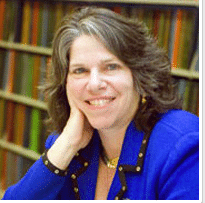Downstream Consequences of Aging is a bi-monthly series written by guest columnist Barbara Weinstein, PhD.
Hearing loss impacts every facet of life and according to recent studies, increases the risk of death.{{1}}[[1]]Genther, D., Betz, J., Pratt, S., Martin, K., et al., (2015). Association Between Hearing Impairment and Risk of Hospitalization in Older Adults. JAGS. 63:1146-52.[[1]] In a recent blog post, Brian Taylor admonished audiologists to embrace innovative hearing care solutions for the growing population of adults with age related hearing loss and attendant negative health outcomes.
Extending Our Reach, Improving Quality of Life
Advances in telecommunication technology have the potential to revolutionize and transform the delivery of hearing health care services to those with handicapping hearing loss. In fact, following a virtual visit, telerehabilitation or delivery of rehabilitation services via information and communication technologies can extend the reach of audiologists, improve their efficiency and effectiveness, and at the same time help to deliver care designed to improve the lives of persons with hearing loss.
Extracting from a recent report issued by the President’s Council of Advisors on Science and Technology (PCAST), improving quality of life and reducing barriers to entry are challenges to which audiologists must respond. A disruptive innovation, delivering quality audiologic services via the Internet is a simple, convenient, and accessible approach of ensuring that our products and services are more affordable.
Efficacy of PROMs
Because of their inherent objectivity (e.g. word recognition in noise), audiologists typically use performance based measures to prove that our interventions are working. Alternatively, patient reported outcome measures (PROMs) are inexpensive, convenient, and represent a more patient-centered approach to demonstrating the impact of our interventions on daily life function.{{2}}[[2]]Beauchamp, M., Jette, A., Ward, R., Kurlinksi, L., et al., (2015). Predictive Validity and Responsiveness of Patient-Reported and Performance-Based Measures of Function in the Boston RISE Study. J Gerontol A Biol Sci Med Sci. 70:616-22.[[2]] With the advent of innovative value-based payment methods within Medicare, there is considerable benefit to incorporating into the provision of rehabilitative services, PROMs that measure socially defined life activities.{{3}}[[3]]Beauchamp, M., Bean, J., Ward, R., Kurlinski, L. et al, (2015). How Should Disability Be Measured in Older Adults? An Analysis from the Boston Rehabilitative Impairment Study of the Elderly. JAGS 63:1187–1191.[[3]]
Persons with self reported hearing handicap are at increased risk for poor self rated health, social isolation, fatigue, and deterioration in quality of life.{{4}}[[4]]Hornsby, B. & Kipp, A. (2015). Subjective Ratings of Fatigue and Vigor in Adults with Hearing Loss Are Driven by Perceived Hearing Difficulties Not Degree of Hearing Loss. Ear and Hearing. August 20. [Epub ahead of print]/[[4]] Further, moderate to severe hearing loss is associated with impaired functional status and impaired physical activity levels which are likely to compromise independence, increasing the need for costly formal support services.{{5}}[[5]]Gispen, F., Chen, D., Genther, D. & Lin, F. (2014). Association Between Hearing Impairment and Lower Levels of Physical Activity in Older Adults. JAGS. 62:1427–1433.[[5]],{{6}}[[6]]Gopinath, B., Schneider, J., McMahon, C., Teber, E., et al., (2012). Severity of age-related hearing loss is associated with impaired activities of daily living. Age and Ageing. 41: 195–200.[[6]]
Since persons with self reported psychosocial hearing difficulties and/or moderate to severe hearing loss tend to have multiple morbidities and an increased burden of disease, it is incumbent on audiologists to use emerging technologies to help preserve functional independence and potentially contribute to reducing risk for incident disability and functional decline.
Evidence of Internet Efficacy
In their recent article, Thoren et al (2015){{7}}[[7]]Thoren, E., Oberg, M., Andersson, G., & Lunner, T. (2015). Internet intervention for hearing loss. American Journal of Audiology. 24: 316-319.[[7]] described two randomized control trials (RCTs) which provide evidence that the Internet can be used effectively to deliver rehabilitation to experienced hearing aid users with moderate hearing loss having residual self reported psychosocial hearing difficulties.
The five week online rehabilitation program described by Thoren and colleagues (2015) was information-based with a focus on hearing loss, hearing aids, communication strategies, and hearing tactics. Unique elements included the requirement that participants have weekly contact with the audiologist, completion of problem solving exercises and reading assignments, coping with the emotional and practical impacts of residual hearing-related limitations. Support was provided in the form of weekly interactions with an audiologist via e-mail and weekly participation in an online discussion forum with peers and a modification to the original rehabilitation program included an online discussion forum.
One of the important goals of the online rehabilitation program was to supplement the information which the audiologists shared at the initial hearing aid fitting. It was notable that the self reported psychosocial hearing difficulties based on scores on the Hearing Handicap Inventory for the Elderly (HHIE) improved for participants in each of the RCT studies after five weeks. Further, psychosocial well-being was maintained and in some cases function improved after six months for participants in the first RCT and after three months in the second RCT.
Summing Up
Use of the internet to further assist hearing aid users with residual psychosocial hearing difficulties could revolutionize service delivery, underscoring the important role of audiologists in hearing health care delivery.
Despite the report issued by the President’s Council of Advisors on Science and Technology (PCAST), audiologists are professionals with an important mission to improve the lives of persons with hearing loss and to disseminate our outcomes to help lead other persons with hearing loss to take up our innovative approaches to hearing health care.
Since hearing impairment is potentially a modifiable risk factor for functional disability, it behooves audiologists to explore cost effective approaches to reducing the negative health outcomes associated with hearing loss especially those with a reduced barrier for entry. Telerehabilitation for experienced hearing aid users with residual deficits is an excellent option as it has the capability of personalizing content and engaging an individual in the learning process.{{8}}[[8]]Saunders, G. & Chisolm, T. (2015). Connected Audiological Rehabilitation: 21st Century Innovations. Journal of the American Academy of Audiology. 26:768-776.[[8]] The RCTs described by Thoren and colleagues (2015) demonstrate how audiologists could improve the journey of persons with hearing loss.
By reducing the self reported psychosocial deficits our interventions may be reducing the negative impacts of hearing loss on well being which may unwittingly yield economic benefits. Documenting changes in disability status following e-interventions is critical. It is clear from the medical literature that while outside of our “clinical comfort zone,” PROMs capture the patient’s perspective, represent an ideal way to both monitor and prognosticate progress, and are ideal for dissemination of our value to patients and health care providers.
Since diffusion is a social process{{9}}[[9]]Gawande, A., Daly, R. (2014). Atul Gawande understanding the forces driving healthcare change Healthcare Financial Management. 68:56-60.[[9]], audiologists have an obligation to relate the value of our services to stakeholders as this information has the potential to help others decide which audiologists they can trust and when an intervention is indicated. The data audiologists gather can help to improve practice patterns and by documenting downstream outcomes, we can demonstrate why audiologists are the professionals of choice to partner with persons with hearing loss to improve well being.
Barbara E. Weinstein, Ph.D. earned her doctorate from Columbia University, where she continued on as a faculty member and developed the Hearing Handicap Inventorywith her mentor, Dr. Ira Ventry. Dr. Weinstein’s research interests range from screening, quantification of psychosocial effects of hearing loss, senile dementia, and patient reported outcomes assessment. Her passion is educating health professionals and the public about the trajectory of untreated age-related hearing loss and the importance of referral and management. The author of both editions of Geriatric Audiology, Dr. Weinstein has written numerous manuscripts and spoken worldwide on hearing loss in the elderly. Dr. Weinstein is the founding Executive Officer of Health Sciences Doctoral Programs at the Graduate Center, CUNY which included doctoral programs in public health, audiology, nursing sciences and physical therapy. She was the first Executive Officer the CUNY AuD program and is a Professor in the Doctor of Audiology program and the Ph.D. program in Speech, Language and Hearing Sciences at the Graduate Center, CUNY.
feature photo courtesy of shannon christy (edit)








